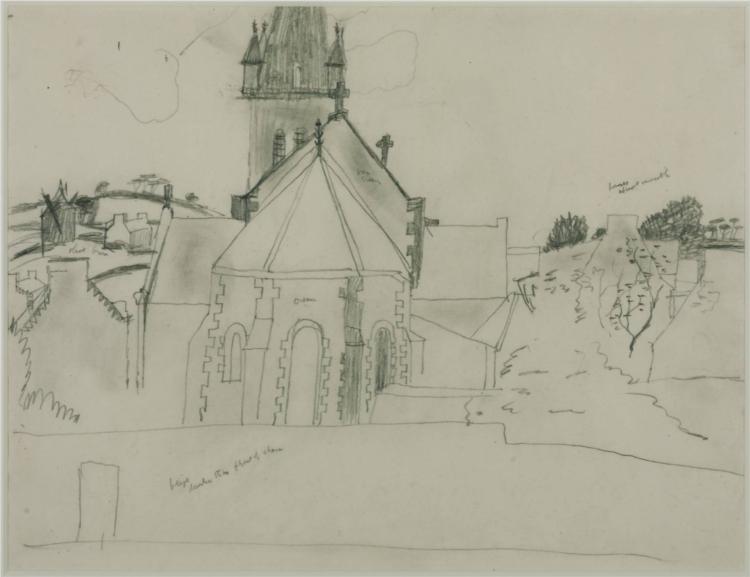Description
In the work of Christopher Wood, "Study for the 'Church of Tréboul' - 1929", there is a sensitivity that intertwines the elegance and distinctive ingenuity of an artist who moved with agility among various currents of the art of the twentieth century. He painting It presents a composition that reflects the delicate harmony of its style, characterized by deceptive simplicity and a deep understanding of color and space.
The scene represented transports us to the picturesque town of Tréboul, a French commune who, with his austere charm, is captivating under Wood's interpretation. The central structure, a church, rises robust and serene in the heart of the painting. Firm lines and precise contours denote an architectural solidity that seems meditatedly contrasted by the softness of the shades used to capture the atmosphere of the place.
Wood makes use of a restricted but effective color palette; Ocrifying, gray and greenish tones predominate, giving the scene a feeling of tranquility and stability. The chromatic disposition not only infuses a visual unit to the work, but also reflects the influence of the Breton landscapes that were a continuous inspiration for the artist. We can observe how colors work hand in hand with the brush technique to elaborate a texture that can almost be felt, suggesting the roughness of the church stone and the freshness of the coastal environment.
It is remarkable that in this painting, Wood has decided to omit the presence of human figures, thus leaving architecture and landscape become the absolute protagonists. This approach gives the work of an introspective quality, inviting the viewer to contemplate the serenity and calm of the place without distractions. The absence of characters could also be interpreted as a reflection on the eternity and endurance of human monuments against the ephemeral individual existence.
The sky, treated with delicate nuances, extends on the scene, adding a more depth and perspective layer. Unlike other contemporary artists who could have opted for a more dramatic and overloaded sky, Wood chooses subtlety, allowing the Church and its environment to breathe and stand out with greater preeminence.
Christopher Wood, although often associated with movements such as post -impressionism and surrealism, maintained a very personal vision of art that resisted easy types. His work "Study for the 'Church of Tréboul' - 1929" is a clear example of his ability to capture the essence of a place and transmit it in a way that feels both familiar and original. In this piece, the artist achieves, through care design and a mastery in handling pigments, immortalizing a church that, although modest, becomes an icon of simplicity and lasting beauty.
Thus, painting not only works as a window to a specific corner of the French Brittany, but also stands as a testimony of Wood's talent to find the sublime in everyday life. In "Study for the 'Church of Tréboul' - 1929", each stroke and each choice of color constitute a slow meditation on space and time, and invite us to participate in the silent dialogue between nature and human creation.
KUADROS ©, a famous paint on your wall.
Hand-made oil painting reproductions, with the quality of professional artists and the distinctive seal of KUADROS ©.
Art reproduction service with satisfaction guarantee. If you are not completely satisfied with the replica of your painting, we refund your money 100%.

